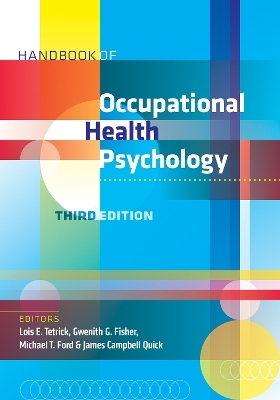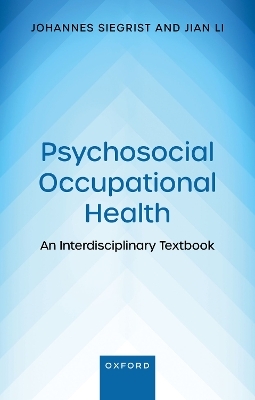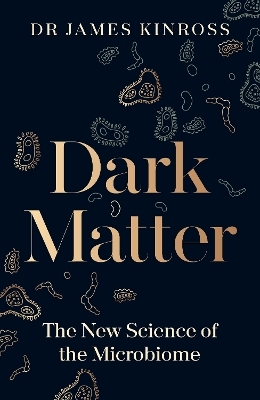
Handbook of Neurological Sports Medicine
Human Kinetics (Verlag)
978-1-4504-4181-0 (ISBN)
Handbook of Neurological Sports Medicine: Concussion and Other Nervous System Injuries in the Athlete presents techniques for diagnosis and treatment of head-related injuries to enable medical professionals to provide the best care possible. Authored by a respected team of neurosurgeons, including highly regarded concussion researcher Julian Bailes, this evidence-based reference offers expert guidelines for managing these serious injuries.
A strong focus is placed on concussion due to the risk involved with this common injury. The text outlines how to recognize, assess, and treat concussions, preparing practitioners to calmly respond to athletes who are exhibiting signs of this dangerous condition. It also reviews the biomechanics and pathophysiology at the core of concussions to better understand their clinical presentations.
Critical return-to-play guidelines and participation recommendations for patients with preexisting neurological conditions or structural lesions arm medical professionals with the principles needed for making appropriate decisions for athletes’ safety. The text explains the roles of pharmacological management, natural treatment approaches, rehabilitation strategies, and education. In addition, chapters provide coverage of postconcussion syndrome, subconcussion, and second-impact syndrome.
Handbook of Neurological Sports Medicine also takes a look at other traumatic injuries, including injuries to the cervical, thoracic, and lumbar spine, and the soft tissue and fascia within the spinal unit. It provides an overview of peripheral nervous system injuries to ensure medical professionals understand those serious and potentially career-ending issues, reviews facets of optimal response with suspected or proven spinal injury, and discusses the evaluation and management of athletes with non-concussion-related headaches and heat illness or heatstroke. The text includes additional features to address issues surrounding critical injuries:
• Guidance on developing an action plan for athletic events prepares first responders for emergency situations.
• A review of cases of interest provides examples of situations that can—and do—occur.
• Medicolegal considerations educate practitioners about negligence, standard of care, and proximate cause.
• More than 150 photos and illustrations offer visual support to further explain the injuries.
The evaluation and management of sport-related neurological injuries have matured at an unprecedented rate. Handbook of Neurological Sports Medicine is a critical resource for all who encounter and treat neurological injuries, providing the foundation for the clinical decisions that all athletic medical practitioners must make to give their patients the best treatment possible.
Continuing education credits and units may also be earned based on the subject matter in this book. Explore online CE course options in Human Kinetics’ Continuing Education store.
Anthony L. Petraglia, MD, graduated from the University of Chicago in 2002 with a BA in neuroscience and earned his medical degree from the University of Rochester School of Medicine and Dentistry in 2007. He completed his residency in neurological surgery at the University of Rochester Medical Center in 2014. Petraglia was the first neurosurgery resident to complete a neurological sports medicine fellowship, and is currently an attending neurosurgeon at Unity Health System in Rochester, New York, where he is also the director of the concussion program. Petraglia has presented nationally and internationally on neurological sports medicine, has published numerous manuscripts and book chapters on various aspects of neurological surgery, and performs editorial duties for several medical journals. His membership in professional organizations includes the Congress of Neurological Surgeons (CNS) and the American Association of Neurological Surgeons (AANS), and he has served as an assistant to the Sports Medicine Section of the AANS/CNS. He has worked as a physician with several collegiate and high school football teams, as a neurosurgical consultant for the Webster Youth Sports Council, and as a medical director for cyclocross racing. Julian E. Bailes, Jr., MD, earned a BS from from Louisiana State University in 1978, and his MD from Louisiana State University School of Medicine in New Orleans in 1982. He completed a general surgery internship at Northwestern Memorial Hospital in 1983 and a neurological surgery residency at Northwestern University in Chicago in 1987, as well as a fellowship in cerebrovascular surgery at the Barrow Neurological Institute in Phoenix. Bailes was director of cerebrovascular surgery at Allegheny General Hospital in Pittsburgh from 1988 until 1997 and later at Celebration Health Hospital in Orlando, where he also was the director of emergency medical services at both the city and county levels. In 2000, Bailes assumed the position of professor and chair in the department of neurosurgery at West Virginia University School of Medicine in Morgantown. He most recently assumed the position of chair of the department of neurosurgery at NorthShore University Health System in Chicago and is co-director of the Neurological Institute. Bailes is a past chair of the Sports Medicine Section for the American Association of Neurological Surgeons. He has more than 100 publications concerning various aspects of neurological surgery, including three books on neurological sports medicine, and performs editorial duties for numerous medical journals. He is an internationally recognized expert on neurological athletic injuries and has been a team physician at either the National Football League (NFL) or collegiate level for more than 20 years. Since 1992, he has been the neurological consultant to the NFL Players’ Association (NFLPA), which has sponsored his research on the effects of head injuries on professional athletes. He is the director of the NFLPA’s Second Opinion Network. He is the medical director of the Center for Study of Retired Athletes, which is affiliated with the NFLPA and the University of North Carolina, and is the medical director of Pop Warner Football, the nation’s largest youth football association. Arthur L. Day, MD, graduated from Louisiana State University Medical School in 1972. He completed his surgical internship iin Birmingham, Alabama, and subsequently completed his residency in neurological surgery and fellowship in brain tumor immunology at the University of Florida College of Medicine in Gainesville, Florida. Day practiced at the University of Florida for 25 years, ultimately rising to the positions of professor, co-chair, and program director of the department of neurological surgery at the University of Florida. In 2002, he moved to Boston to assume a position as a professor of surgery at Harvard Medical School with a clinical practice at Brigham and Women’s Hospital. While there, he served as the associate chair and residency program director of the department of neurological surgery at Brigham and Women’s and Children’s Hospital in Boston. Subsequently, he was the chair of the department and also the director of the Cerebrovascular Center and the Neurologic Sports Injury Center at Brigham and Women’s Hospital. He co-founded and directed an annual meeting at Fenway Park addressing the latest knowledge and treatments of athletic-related neurological injuries. He currently is professor, vice chair, residency program director, and director of clinical education in the department of neurosurgery at the University of Texas Medical School at Houston. Day has held leadership positions in many medical professional societies and has received numerous awards and honors. He has published almost 170 journal articles and book chapters and has co-edited a book about neurological sports injuries. He is an internationally recognized expert in neurological sports medicine. For the past 30 years, he has served as a consulting physician for multiple NCAA and National Football League (NFL) teams.
Part 1: General Concepts
Chapter 1. Athletes and Neurological Injuries: A View From 10,000 Feet
A Stroll Through History
The Present
Spectrum of Neurological Injury in Sports
Concluding Thoughts
References
Chapter 2. Medicolegal Considerations in Neurological Sports Medicine
With Increased Awareness Comes Increased Scrutiny
The King of Concussions
Negligence
Duty and Breach
Violation of a Statutory Duty
Standard of Care Defined by Experts
Standard of Care Established Through Literature, Rules, Protocols and Textbooks
Good Samaritan Laws
Proximate Cause
Assumption of the Risk
Theories of Negligence
Cases of Interest
NFL and NCAA Concussion Litigation Concluding Thoughts
References
Chapter 3. Having a Game Plan
Developing an Emergency Action Plan
Caring for Athletic Injuries Responsibilities of Host and Visiting Medical Staff
Concluding Thoughts
References
Part 2: Sport-Related Head Injuries
Chapter 4. Biomechanics, Pathophysiology, and Classification of Concussion
Biomechanics and Basic Concepts
Lessons Learned From Football
Lessons Learned From Other Sports
Pathophysiology of Concussion
Classification of Concussion and Grading Systems
Concluding Thoughts
References
Chapter 5. In the Trenches: Acute Evaluation and Management of Concussion
Presentation
Acute Evaluation
Concluding Thoughts
References
Chapter 6. Neuroimaging and Neurophysiological Studies in the Head-Injured Athlete
Standard Neuroimaging
Advanced Structural Techniques
Advanced Functional Techniques
Neurophysiological Techniques
Concluding Thoughts
References
Chapter 7. Neuropsychological Assessment in Concussion
Use of Symptom Checklists
Value of Neuropsychological Assessment of Concussion
Issues With Computerized Assessments
Other Considerations
Other Issues Addressed by Neuropsychologists in the Assessment of Concussed Patients
Concluding Thoughts
References
Chapter 8. Role of Balance Testing and Other Adjunct Measures in Concussion
Balance Assessment in Concussion
Emerging Technology and Future Directions for Adjunct Measures of Assessment in Concussion
Concluding Thoughts
References
Chapter 9. Postconcussion Syndrome
What’s in a Definition
Scope of the Problem
A Neuroanatomical Substrate for Prolonged Symptoms
Psychogenesis of PCS and PPCS
A Modern Conceptual Framework for PCS and PPCS
Concluding Thoughts
References
Chapter 10. Neuropathology of Chronic Traumatic Encephalopathy
Definition of Chronic Traumatic Encephalopathy
Posttraumatic Encephalopathy Versus Chronic Traumatic Encephalopathy
Gross Morphology and Histomorphology of Chronic Traumatic Encephalopathy
Concluding Thoughts
References
Chapter 11. The Emerging Role of Subconcussion
A Working Definition
Laboratory Evidence of Subconcussive Effects
Clinical Evidence of Subconcussion
Concluding Thoughts
References
Chapter 12. Severe Head Injury and Second Impact Syndrome
Cerebral Contusions and Intraparenchymal
Hemorrhage Traumatic Subarachnoid Hemorrhage
Subdural Hematoma
Skull Fractures
Epidural Hematoma
Diffuse Axonal Injury
Arterial Dissection and Stroke
Fatalities
Other Posttraumatic Sequelae
Second Impact Syndrome
Concluding Thoughts
References
Chapter 13. Neurological Considerations in Return to Sport Participation
History of Return to Play
Symptom Complex and Identification
Return to Play and Brain Abnormalities
Addressing and Resolving Return to Play Issues
Concluding Thoughts
References
Chapter 14. The Role of Pharmacological Therapy and Rehabilitation in Concussion
The Decision to Treat Pharmacologically
Somatic Symptoms
Sleep Disturbance Symptoms
Emotional Symptoms
Cognitive Symptoms
The Role of Rehabilitation in Concussion Management
Concluding Thoughts
References
Chapter 15. The Research Behind Natural Neuroprotective Approaches to Concussion
Eicosapentaenoic Acid and Docosahexaenoic Acid
Curcumin
Resveratrol
Creatine
Green Tea
Caffeine
Vitamins E and C
Vitamin D
Scutellaria baicalensis
Examples of Other Neuroprotective Nutraceuticals
Another Natural Approach: Hyperbaric Oxygen Therapy
Concluding Thoughts
Concluding Thoughts
References
Part 3: Sport-Related Injuries of the Spine and Peripheral Nervous System
Chapter 16. Cervical, Thoracic, and Lumbar Spine Injuries: Types, Causal Mechanisms, and Clinical Features
Background and Epidemiology
Normal Anatomy
Types of Tissue Injuries and Neurologic Syndromes
Common Cervical Injuries and Conditions
Common Thoracic Injuries
Common Lumbar Injuries
Concluding Thoughts
References
Chapter 17. Management of Spine Injuries, Including Rehabilitation, Surgical Considerations, and Return to Play
On-the-Field Assessment
Radiological Assessment
Treatment and Rehabilitation
Surgical Considerations
Cervical Spine Injuries and Their Management and Treatment
Cervical Spine Injury: Return to Play
Thoracic and Lumbar Spine Injuries and Their Management
Concluding Thoughts
Chapter 18. Peripheral Nerve Injuries in Athletes
Epidemiology
Pathogenesis
Clinical Evaluation
Additional Testing
Management Rationale
Surgical Options: Primary Nerve Surgery
Surgical Options: Secondary Surgery (Soft Tissue or Bony Reconstruction)
Postoperative Management and Return to Play
Legal Implications
Concluding Thoughts
References
Part 4: Other Sport-Related Neurological Issues
Chapter 19. Headaches in Athletics
Clinical Approach and Assessment
Commonly Recognized Headache Syndromes Coincidental to Sporting Activity
Prolonged Sporting Activity as a Trigger for Commonly Recognized Headache Syndromes
Primary Exertional Headache
Headaches Attributed to Head or Neck Trauma
Headaches Attributed to Sport-Specific Mechanisms
Concluding Thoughts
References
Chapter 20. Heat Illness in Sports
Background
Contributory Factors in Heat Illness
Prevention
The Spectrum of Heat Illness and Management
Return to Play
Concluding Thoughts
References
| Verlagsort | Champaign, IL |
|---|---|
| Sprache | englisch |
| Maße | 216 x 279 mm |
| Gewicht | 1429 g |
| Themenwelt | Medizin / Pharmazie ► Medizinische Fachgebiete ► Arbeits- / Sozial- / Umweltmedizin |
| Medizin / Pharmazie ► Medizinische Fachgebiete ► Sportmedizin | |
| Studium ► Querschnittsbereiche ► Klinische Umweltmedizin | |
| ISBN-10 | 1-4504-4181-5 / 1450441815 |
| ISBN-13 | 978-1-4504-4181-0 / 9781450441810 |
| Zustand | Neuware |
| Haben Sie eine Frage zum Produkt? |
aus dem Bereich


